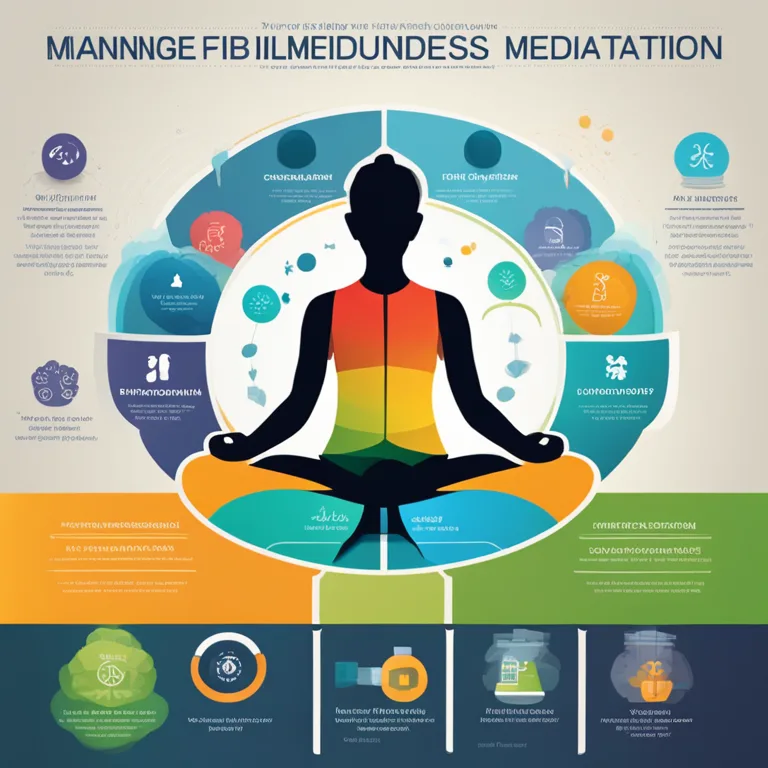
Easing Panic Attacks with Mindfulness Meditation
Learn the calming power of mindfulness meditation in managing panic attacks and regaining control over your mind and body.
article by Hina Kurosawa
Panic Attacks and Mindfulness Connection
Mentioning the surge in anxiety-related disorders globally, the article begins with a connection between mindfulness and stress relief. Panic attacks can be debilitating, inciting fear and intense physical reactions. The essence of mindfulness in quelling these intense emotions lies in its focus on the present moment, encouraging a non-judgmental awareness that counteracts the spiral of panic.

Understanding Mindfulness Meditation
This section introduces the concept of mindfulness meditation. It's an ancient practice revived for modern utility, now grounded in scientific research. Mindfulness involves ushering in a state of active, open attention to the present, often achieved through various meditation techniques. Practitioners learn to observe their thoughts and feelings without attaching or reacting to them, which can be particularly beneficial when facing panic.

Embracing Meditation During Panic
Here, the technique of anchoring into the meditation during moments of panic is described. It suggests practical steps for someone experiencing a panic attack, such as focusing on breath or a physical sensation, to draw back from the overwhelming emotions and stabilize their current experience.

Scientific Backing and Benefits
The article presents studies from esteemed institutions that corroborate the efficacy of mindfulness meditation in managing anxiety and reducing the frequency and intensity of panic attacks. It shares insights on neurological changes that make this practice effective, like the reduction in activity in the amygdala, the brain's "fear center."

Starting a Mindfulness Practice
A beginner's guide to starting mindfulness practice is outlined here, offering tips on duration, posture, and frequency. The paragraph includes suggestions for guided meditations, meditation apps, or local classes and emphasizes consistency for better results.
Integrating Mindfulness in Daily Routine
For long-term impact, this section discusses incorporating mindfulness into daily life, beyond scheduled meditation sessions. It suggests simple exercises that can be done anytime, anywhere, to foster a habit of mindfulness that can be particularly grounding during the onset of a panic attack.
Overcoming Challenges in Meditation
Acknowledging common challenges faced by beginners, such as frustration, distraction, or impatience, this portion of the article offers encouragement and strategies for overcoming these barriers. It normalizes the experience of a wandering mind and provides reassurance that perseverance leads to profound benefits.
Maintaining a Supportive Environment
The final talking points stress the importance of maintaining a supportive environment and seeking professional help if needed. While mindfulness meditation is a powerful tool, it also advocates for a holistic approach to mental health that might include therapy, medication, or other supportive measures.
Published: 1/8/2024
Modified: 1/8/2024
More predictions
Come back here soon to learn more about yourself and your future


Meditation's Impact on the Limbic System
Explore how meditation can positively influence your emotional and neurological well-being through its effects on the limbic system.


The Harmony of Mindful Breathing in Meditation
Delve into the symbiotic relationship between meditation, mindfulness, and breathwork to achieve inner peace and clarity.


Calming the Student Mind: A Guide to Mindfulness Meditation
Discover how mindfulness meditation can benefit high school students, offering a practical solution for stress management and enhanced focus in the academic environment.